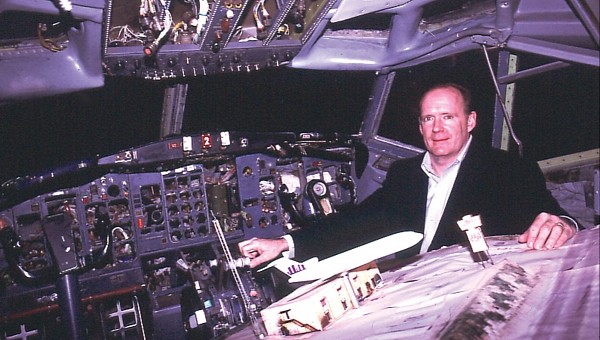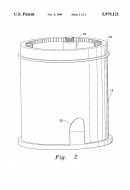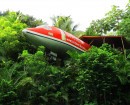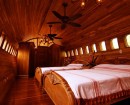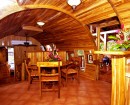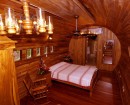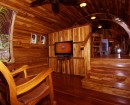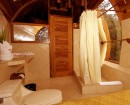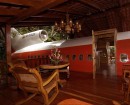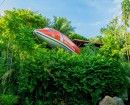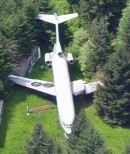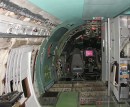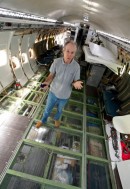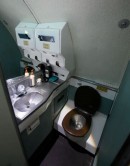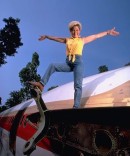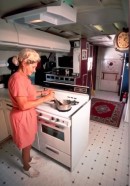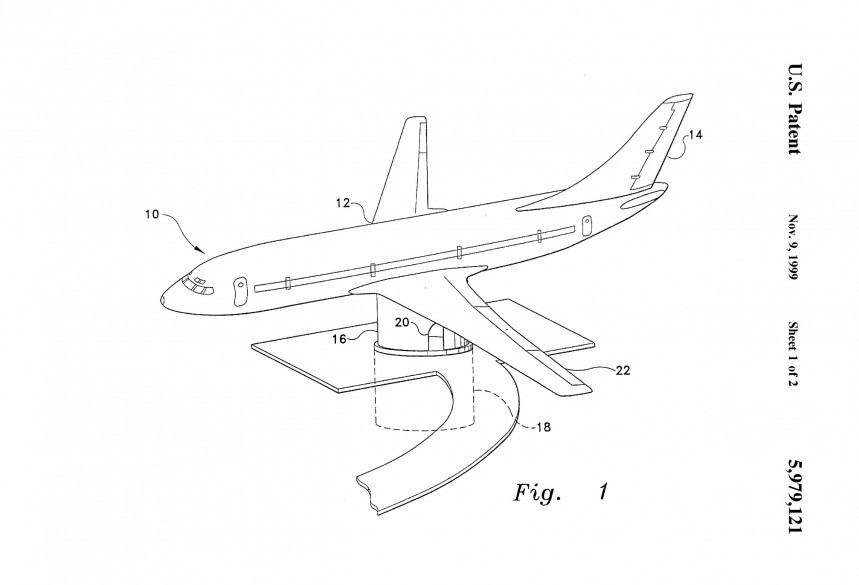Living in peak consumerism, we’ve become accustomed to just throw stuff away instead of reusing or repurposing it. But when said “stuff” is a giant Boeing 727 aircraft that is still in excellent condition, maybe repurposing isn’t such a bad idea.
The idea of upcycling planes is not new, and we’re not trying to make it sound like it is. It’s been around for decades and has been showcased brilliantly in a series of examples we’ve also covered over the years.
Upcycling a decommissioned passenger aircraft by turning it into a residence, either a permanent home or a unique hotel, is costly and very time-consuming and requires a particular set of skills most DIY-ers don’t have. This is all the more true when we’re talking about an aircraft the size of a Boeing 727, which, when still airworthy, offers 1,200 square feet (111.5 square meters) of interior space for as many as 189 passengers. No wonder aircraft conversions never picked up speed to become mainstream.
But DIY (Do It Yourself) homes made from airplanes do exist, and they stand out as beautiful exceptions. This one, the Boeing 727 home on a pole, would have made aircraft conversions standard without the need for laborious and expensive DIY. Dubbed the fastest house in the housing industry, it was the creation of former pilot Thomas Bennington and his Smyrna, Tennessee-based company Max Power Aerospace.
Bennington’s idea was meant to solve several issues at once: that of sending perfectly good aircraft to the scrapyard, that of providing homes for people in areas prone to hurricanes and floods, and that of offering affordable housing. It was, as they say, perfection personified. A most beautiful Boeing 727-shaped unicorn that spun in the wind.
Bennington applied for a patent for the Wind Resistant Dwelling in 1998, the same year he founded the company Max Power Aero. The patent was granted the following year, and for the next couple of years, he rode the wave of national fame, with his rotating aircraft home getting plenty of media coverage, including interviews with NBC and ads in the DuPont Registry.As of the time of press, the patent is expired since 2018 but has already been discontinued since 2011 due to non-payment of maintenance fees.
The Wind Resistant Dwelling or the Boeing 727 on a pole, as it was described in the media at the time, was the fuselage of a Boeing 727 with its tail fin and wings intact. The aircraft is mounted on a support steel column 15 feet (4.5 meters) high, with a bearing and gearing system that grants it a single axis of rotation perpendicular to the ground. Dampening and braking assemblies are housed within the same support column, while the motor-driven gearing would enable “manual” rotation of the aircraft.
Otherwise, the aircraft would spin in the wind, much in the manner of a weather vane. Instead of opposing the force of strong winds like a normal house, the Boeing 727 home would rotate with it, always with the nose pointed in the direction of the wind. Its elevated position on the pole would make it flood-proof, so theoretically, you could set one such home up even on the waterway, not just on solid but flood-prone ground.
“The fuselage of such an aircraft has been engineered and tested to withstand wind speeds in excess of five hundred (500) mph [805 kph], temperatures below negative fifty (-50) degrees Fahrenheit [-45.56°C] and stress forces greater than 2.5 gravities,” Bennington explained.
Its construction meant that it would make a maintenance-free home, free of mold and impervious to bugs and that it would remain so for the next decades, he promised. The vast interior could be arranged into a comfortable home, with all the creature comforts: a kitchen, a full bathroom and a half-bath, a large living room and other common areas, and two bedrooms. The interior would first have to be sorted out before the entire structure was elevated off the ground, as well as connections to the grid for electricity, water, and waste.
Initially, Bennington estimated a $200,000 starting price for one such rotating homemade from a retired aircraft, which included everything from the fuselage to its transport to the location, the steel support column, and a basic layout of the interior. The price later went up to $290,000 once he factored in the interior.
In 2000, he revealed in an interview that the first production unit was under construction for a Nashville radio station that wanted to use it to host live webcasts. We reached out to Mr. Bennington for clarification on whether delivery took place or not or if other units were ever built, and we’ll update the story when and if we hear back.
Bennington knew that his idea could be described as a fad, but he had high hopes it would catch on. In reality, he was convinced it would catch once “once people start living in them.” “It is just nice pointing into the wind and nice that the whole airplane turns. It makes every day different,” he said. It would have, that’s for sure.
Update, December 27: Mr. Bennington got back to us, saying that he came very close to closing two big deals for his patented Wind Resistant Dwellings, one for three such units, the other for a single 727. Both fell through for reasons independent of his will. Despite the setbacks, he still "think[s] weather vaning airplanes are a great idea," that "they belong by themselves, like on an island in The Bahamas." Mr. Bennington is currently working on two projects in this sense, one involving Boeing 737s, and the other an A380, but "it's been a tough business."
Upcycling a decommissioned passenger aircraft by turning it into a residence, either a permanent home or a unique hotel, is costly and very time-consuming and requires a particular set of skills most DIY-ers don’t have. This is all the more true when we’re talking about an aircraft the size of a Boeing 727, which, when still airworthy, offers 1,200 square feet (111.5 square meters) of interior space for as many as 189 passengers. No wonder aircraft conversions never picked up speed to become mainstream.
But DIY (Do It Yourself) homes made from airplanes do exist, and they stand out as beautiful exceptions. This one, the Boeing 727 home on a pole, would have made aircraft conversions standard without the need for laborious and expensive DIY. Dubbed the fastest house in the housing industry, it was the creation of former pilot Thomas Bennington and his Smyrna, Tennessee-based company Max Power Aerospace.
Bennington applied for a patent for the Wind Resistant Dwelling in 1998, the same year he founded the company Max Power Aero. The patent was granted the following year, and for the next couple of years, he rode the wave of national fame, with his rotating aircraft home getting plenty of media coverage, including interviews with NBC and ads in the DuPont Registry.As of the time of press, the patent is expired since 2018 but has already been discontinued since 2011 due to non-payment of maintenance fees.
The Wind Resistant Dwelling or the Boeing 727 on a pole, as it was described in the media at the time, was the fuselage of a Boeing 727 with its tail fin and wings intact. The aircraft is mounted on a support steel column 15 feet (4.5 meters) high, with a bearing and gearing system that grants it a single axis of rotation perpendicular to the ground. Dampening and braking assemblies are housed within the same support column, while the motor-driven gearing would enable “manual” rotation of the aircraft.
Otherwise, the aircraft would spin in the wind, much in the manner of a weather vane. Instead of opposing the force of strong winds like a normal house, the Boeing 727 home would rotate with it, always with the nose pointed in the direction of the wind. Its elevated position on the pole would make it flood-proof, so theoretically, you could set one such home up even on the waterway, not just on solid but flood-prone ground.
Its construction meant that it would make a maintenance-free home, free of mold and impervious to bugs and that it would remain so for the next decades, he promised. The vast interior could be arranged into a comfortable home, with all the creature comforts: a kitchen, a full bathroom and a half-bath, a large living room and other common areas, and two bedrooms. The interior would first have to be sorted out before the entire structure was elevated off the ground, as well as connections to the grid for electricity, water, and waste.
Initially, Bennington estimated a $200,000 starting price for one such rotating homemade from a retired aircraft, which included everything from the fuselage to its transport to the location, the steel support column, and a basic layout of the interior. The price later went up to $290,000 once he factored in the interior.
In 2000, he revealed in an interview that the first production unit was under construction for a Nashville radio station that wanted to use it to host live webcasts. We reached out to Mr. Bennington for clarification on whether delivery took place or not or if other units were ever built, and we’ll update the story when and if we hear back.
Bennington knew that his idea could be described as a fad, but he had high hopes it would catch on. In reality, he was convinced it would catch once “once people start living in them.” “It is just nice pointing into the wind and nice that the whole airplane turns. It makes every day different,” he said. It would have, that’s for sure.
Update, December 27: Mr. Bennington got back to us, saying that he came very close to closing two big deals for his patented Wind Resistant Dwellings, one for three such units, the other for a single 727. Both fell through for reasons independent of his will. Despite the setbacks, he still "think[s] weather vaning airplanes are a great idea," that "they belong by themselves, like on an island in The Bahamas." Mr. Bennington is currently working on two projects in this sense, one involving Boeing 737s, and the other an A380, but "it's been a tough business."
